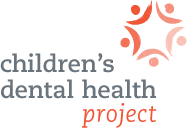Pregnancy and Early Childhood

Tooth decay can be prevented, yet 1 in 4 children have had tooth decay by age 5. Children of color have higher rates of tooth decay.
Oral health is essential to overall health. Good habits start young.
-
Nearly all tooth decay can be prevented. Early prevention is cost-effective.
-
Tooth decay is caused by a bacterial disease ("caries") that can spread from person to person. This is why parents should not try to use their own saliva to "clean" a baby's dropped pacifier.
-
A mother's oral health is a strong predictor of her children's oral health.
-
Tooth decay is the most common chronic disease of early childhood. In fact, it's a condition that is 2-3 times more common than asthma or obesity.
-
About 4 of 10 pregnant women have tooth decay or gum disease. This puts their children at higher risk for poor oral health. CDHP's Oral Health & Pregnant Women Resource Center includes key resources that highlight the importance of dental health during pregnancy.
-
In a national survey, 77% of obstetricians and gynecologists reported having patients who were declined dental services because they were pregnant.
-
Nearly half of U.S. births are covered by Medicaid, but not all states provide dental coverage to pregnant women.
-
Parents should start brushing children's teeth with fluoride toothpaste as soon as teeth appear, but many mistakenly believe they should wait. In a 2015 survey, 41% of parents answered "true" when asked if brushing should start when a child is 3 years old.
-
Children with cavities in their primary (baby) teeth are three times more likely to develop cavities in their permanent (adult) teeth. The early loss of baby teeth can make it harder for permanent teeth to grow in properly.
-
Nearly a quarter of all children ages 2 to 5—and more than half of all children ages 6 to 8—have experienced tooth decay. Tooth or gum pain can hurt a child's healthy development, including the ability to learn, play and eat healthy foods.
-
43% of preschool-age American Indian/Alaska Native children have untreated caries. Preschool-aged Native American children had four times as much tooth decay as white children experienced.
For many reasons, economically vulnerable families have higher rates of decay. CDHP works with partners to strengthen understanding of the disease and its solutions, from good habits to effective policies.
